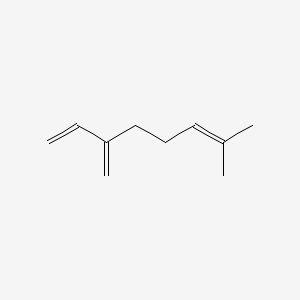| Authors | Title | Published | Journal | PubMed Link |
|---|---|---|---|---|
| Lin SY et al. | Volatile organic components of fresh leaves as indicators of indigenous and cultivated citrus species in Taiwan. | 2010 | Biosci. Biotechnol. Biochem. | pmid:20378980 |
| El Amine Dib M et al. | Characterization of volatile compounds of Daucus crinitus Desf. Headspace Solid Phase Microextraction as alternative technique to Hydrodistillation. | 2010 | Chem Cent J | pmid:20858266 |
| Goodger JQ et al. | Isolation of intact sub-dermal secretory cavities from Eucalyptus. | 2010 | Plant Methods | pmid:20807444 |
| Aw T et al. | Functional genomics of mountain pine beetle (Dendroctonus ponderosae) midguts and fat bodies. | 2010 | BMC Genomics | pmid:20353591 |
| Miyazawa M et al. | Character impact odorants of wild edible plant--Cacalia hastata L. var. orientalis--used in Japanese traditional food. | 2010 | J Oleo Sci | pmid:20877145 |
| Shiojiri K et al. | Herbivore-specific, density-dependent induction of plant volatiles: honest or "cry wolf" signals? | 2010 | PLoS ONE | pmid:20808961 |
| Silva AG et al. | The essential oil of Brazilian pepper, Schinus terebinthifolia Raddi in larval control of Stegomyia aegypti (Linnaeus, 1762). | 2010 | Parasit Vectors | pmid:20799936 |
| Habila N et al. | Evaluation of In Vitro Activity of Essential Oils against Trypanosoma brucei brucei and Trypanosoma evansi. | 2010 | J Parasitol Res | pmid:20700425 |
| Brodkorb D et al. | Linalool dehydratase-isomerase, a bifunctional enzyme in the anaerobic degradation of monoterpenes. | 2010 | J. Biol. Chem. | pmid:20663876 |
| Huang M et al. | Variation of herbivore-induced volatile terpenes among Arabidopsis ecotypes depends on allelic differences and subcellular targeting of two terpene synthases, TPS02 and TPS03. | 2010 | Plant Physiol. | pmid:20463089 |
Myrcene
Myrcene is a lipid of Prenol Lipids (PR) class. Myrcene is associated with abnormalities such as Hypomenorrhea, abnormal fragmented structure, Nephrosis, Renal tubular disorder and Kidney Diseases. The involved functions are known as Anabolism, Gene Expression, Protein Biosynthesis, Mutation and Selection, Genetic. Myrcene often locates in Plastids, Proboscis, Body tissue, Clone and soluble. The associated genes with Myrcene are TTPA gene, monoterpene synthase, Genome, 4S-limonene synthase and Homologous Gene. The related lipids are Pinene, Octanols, Membrane Lipids and Fatty Acids, Unsaturated.
Cross Reference
Introduction
To understand associated biological information of Myrcene, we collected biological information of abnormalities, associated pathways, cellular/molecular locations, biological functions, related genes/proteins, lipids and common seen animal/experimental models with organized paragraphs from literatures.
What diseases are associated with Myrcene?
Myrcene is suspected in Nephrosis, Kidney Diseases, Dehydration, Hypomenorrhea, Renal tubular disorder and other diseases in descending order of the highest number of associated sentences.
Related references are mostly published in these journals:
| Disease | Cross reference | Weighted score | Related literature |
|---|
No disease MeSH terms mapped to the current reference collection.
PubChem Associated disorders and diseases
What pathways are associated with Myrcene
There are no associated biomedical information in the current reference collection.
PubChem Biomolecular Interactions and Pathways
Link to PubChem Biomolecular Interactions and PathwaysWhat cellular locations are associated with Myrcene?
Visualization in cellular structure
Associated locations are in red color. Not associated locations are in black.
Related references are published most in these journals:
| Location | Cross reference | Weighted score | Related literatures |
|---|
What functions are associated with Myrcene?
Related references are published most in these journals:
| Function | Cross reference | Weighted score | Related literatures |
|---|
What lipids are associated with Myrcene?
Related references are published most in these journals:
| Lipid concept | Cross reference | Weighted score | Related literatures |
|---|
What genes are associated with Myrcene?
Related references are published most in these journals:
| Gene | Cross reference | Weighted score | Related literatures |
|---|
What common seen animal models are associated with Myrcene?
There are no associated biomedical information in the current reference collection.
